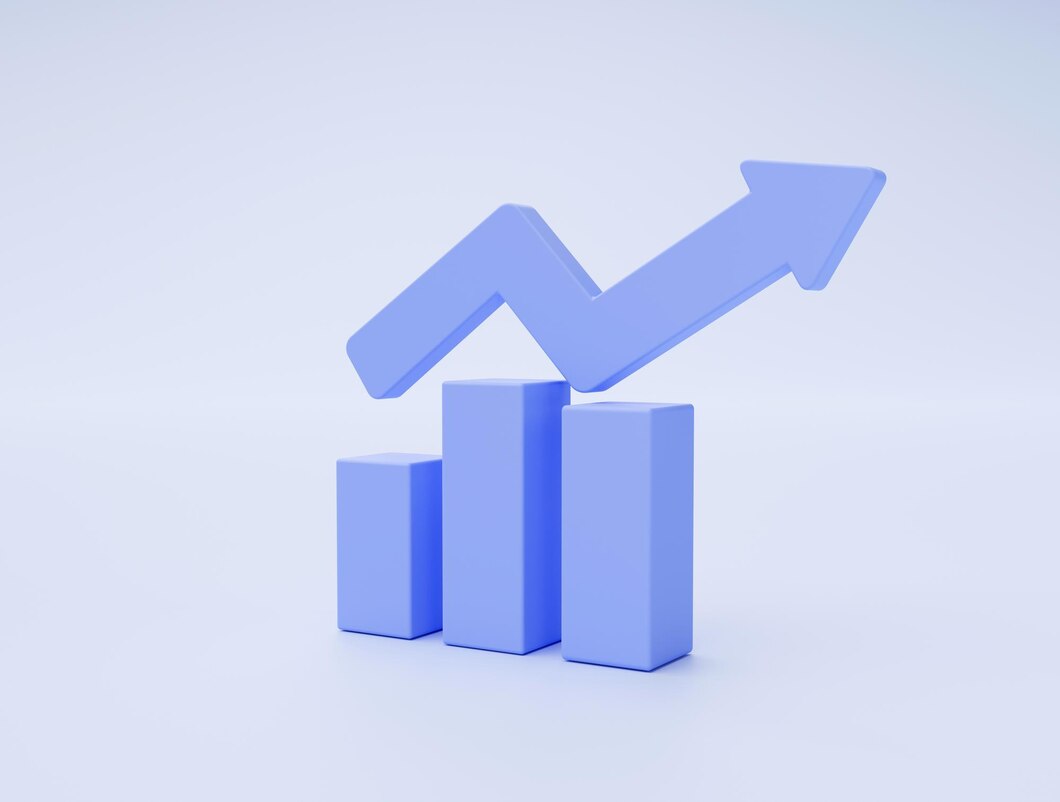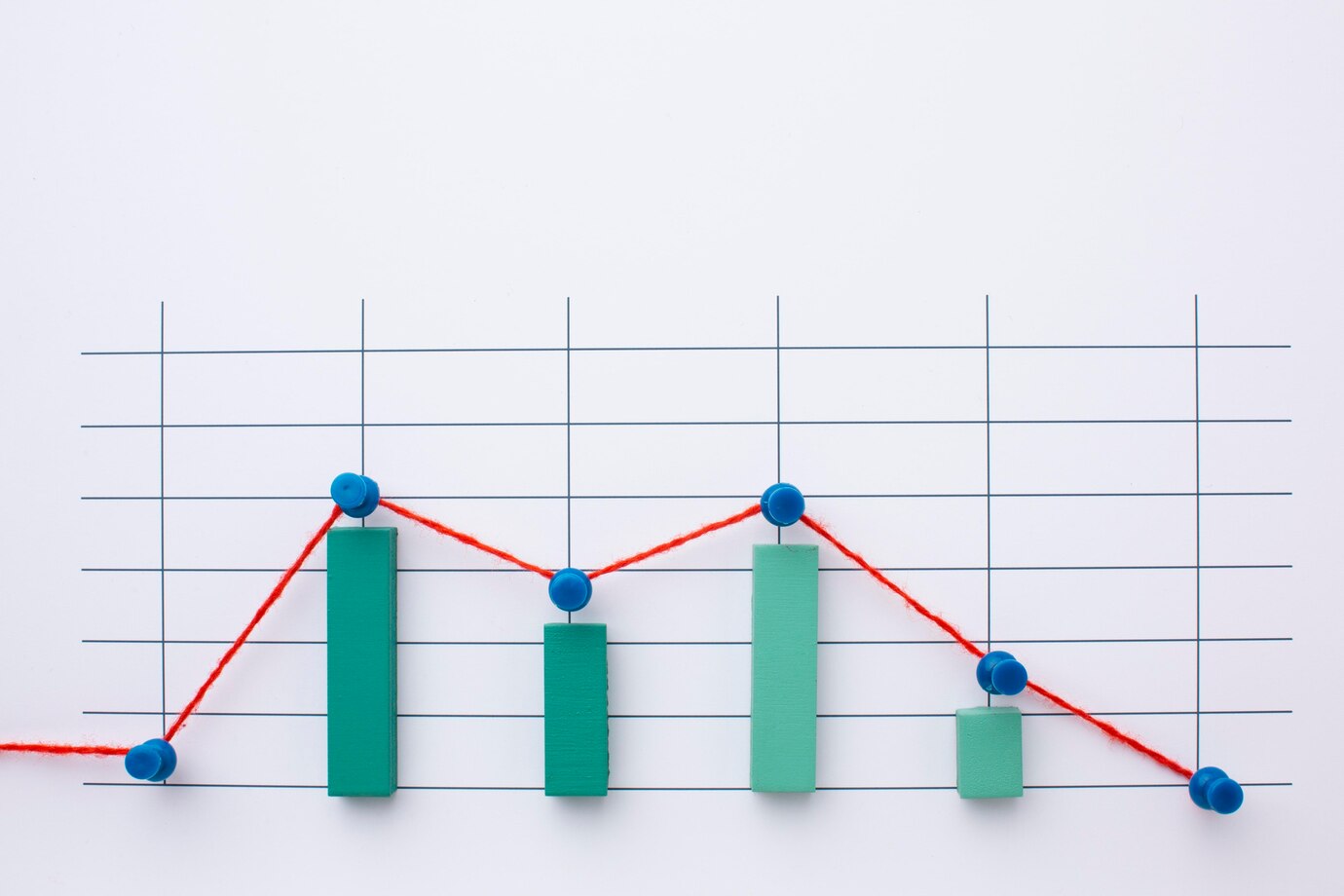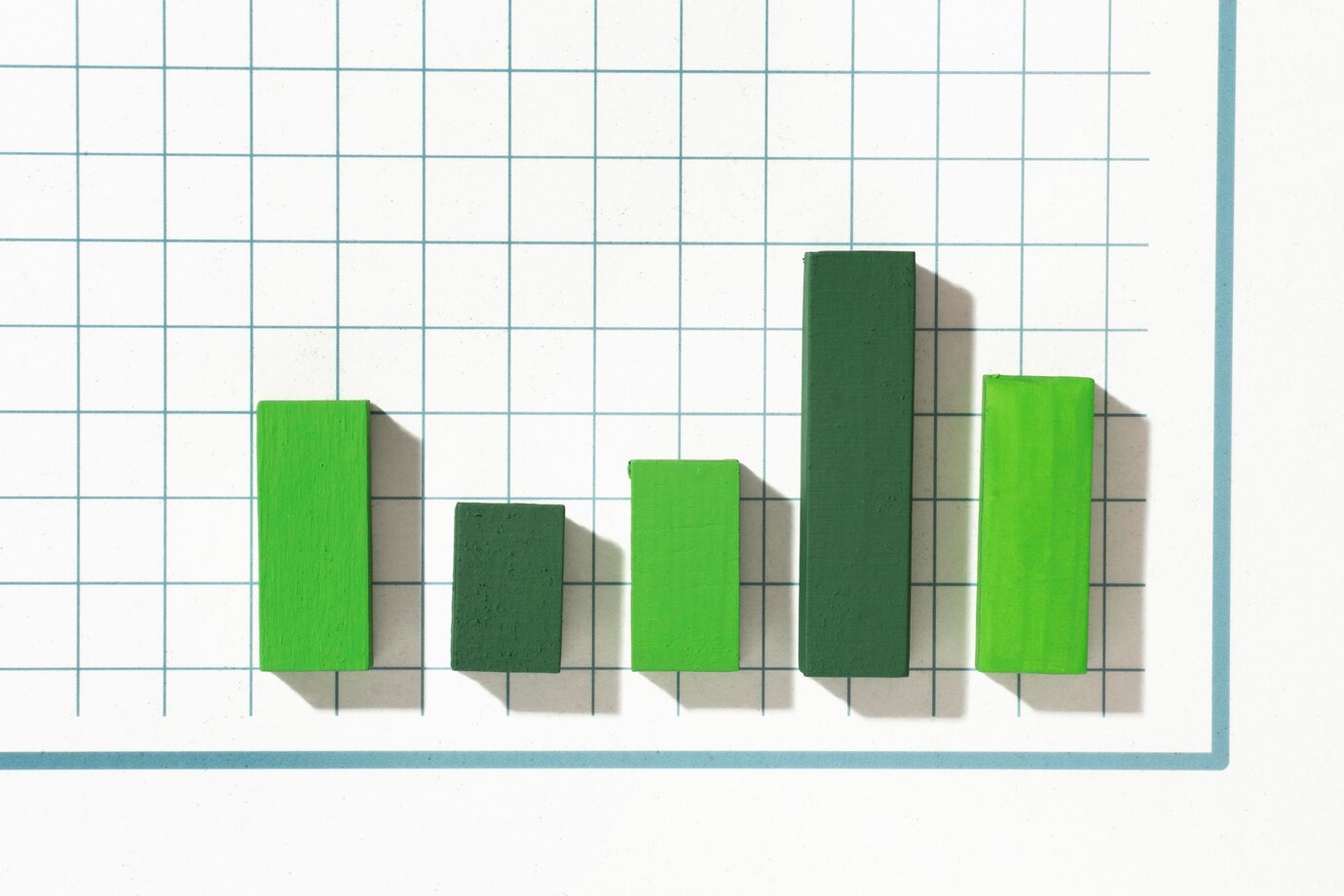Why SaaS Companies Need Advanced Analytics to Stay Competitive
Introduction
In today’s hyper-competitive SaaS (Software as a Service) landscape, businesses can no longer rely solely on intuition or basic reporting to drive growth. With increasing customer expectations, rising acquisition costs, and fierce competition, SaaS companies must leverage advanced analytics to make data-driven decisions, optimize operations, and enhance customer experiences.
Advanced analytics—powered by AI, machine learning, and predictive modeling—provides deeper insights into user behavior, churn risks, revenue trends, and operational efficiency. Companies that fail to adopt these tools risk falling behind competitors who use data to refine their strategies in real time.
In this article, we’ll explore why SaaS businesses must embrace advanced analytics to stay competitive, covering:
- The Growing Importance of Data in SaaS
- Key Benefits of Advanced Analytics for SaaS
- Use Cases of Advanced Analytics in SaaS
- Challenges in Implementing Advanced Analytics
- How to Get Started with Advanced Analytics
1. The Growing Importance of Data in SaaS
The SaaS industry thrives on subscription-based revenue models, where customer retention is just as crucial as acquisition. Unlike traditional software, SaaS companies must continuously prove value to prevent churn and maximize lifetime value (LTV).
With millions of data points generated daily—from user logins and feature usage to support tickets and payment histories—companies that harness this data effectively gain a competitive edge.
Why Traditional Analytics Aren’t Enough
- Basic dashboards show what happened but don’t explain why.
- Manual reporting is slow and can’t keep up with real-time decision-making.
- Without predictive insights, companies react too late to churn or revenue dips.
Advanced analytics fills these gaps by providing:
✅ Predictive insights (e.g., which customers are likely to churn)
✅ Automated anomaly detection (e.g., sudden drops in engagement)
✅ Personalized recommendations (e.g., upselling opportunities)
2. Key Benefits of Advanced Analytics for SaaS
A. Reducing Customer Churn with Predictive Analytics
Churn is the #1 growth killer for SaaS businesses. Advanced analytics helps by:
- Identifying at-risk customers based on usage patterns and engagement metrics.
- Triggering automated retention campaigns (e.g., personalized offers or check-ins).
- Analyzing why customers leave and improving product-market fit.
Example: A SaaS company using ML models reduced churn by 20% by proactively engaging customers who showed declining activity.
B. Optimizing Pricing & Revenue Growth
Pricing is a delicate balance—charge too much, and customers leave; charge too little, and revenue suffers. Advanced analytics enables:
- Dynamic pricing models based on customer segments.
- Usage-based billing optimizations to increase expansion revenue.
- A/B testing different pricing tiers to find the sweet spot.
Example: A B2B SaaS firm increased ARPU (Average Revenue Per User) by 15% after analyzing which features drove the most upgrades.
C. Improving Product Adoption & User Engagement
Low adoption = higher churn. Advanced analytics helps SaaS companies:
- Track feature usage to identify underutilized tools.
- Personalize onboarding flows based on user behavior.
- Predict which users will become power users and nurture them.
Example: A project management SaaS used heatmaps to discover that 30% of users never used a key feature, leading to a redesigned onboarding process that boosted engagement.
D. Enhancing Sales & Marketing Efficiency
Wasting ad spend on unqualified leads? Advanced analytics improves:
- Lead scoring to prioritize high-intent prospects.
- Customer segmentation for hyper-targeted campaigns.
- Attribution modeling to optimize ad spend.
Example: A SaaS startup reduced CAC (Customer Acquisition Cost) by 25% by focusing ad spend on high-converting segments.
E. Automating Operations & Reducing Costs
Manual processes slow down growth. Advanced analytics enables:
- AI-driven customer support (chatbots, ticket prioritization).
- Infrastructure cost optimization (e.g., server usage analysis).
- Fraud detection in subscription payments.
Example: A fintech SaaS reduced cloud costs by 40% by analyzing usage trends and rightsizing server capacity.
3. Use Cases of Advanced Analytics in SaaS
| Use Case | How Advanced Analytics Helps |
|---|---|
| Churn Prediction | ML models flag at-risk users before they cancel. |
| Upsell Opportunities | Recommends premium features based on usage. |
| Customer Segmentation | Groups users by behavior for targeted campaigns. |
| Lifetime Value (LTV) Forecasting | Predicts future revenue from each customer. |
| Anomaly Detection | Alerts on sudden drops in engagement or payments. |
| A/B Testing Optimization | Uses statistical models to pick winning variants faster. |
4. Challenges in Implementing Advanced Analytics
While the benefits are clear, SaaS companies face hurdles:
🔹 Data Silos – Disconnected tools (CRM, billing, analytics) make holistic insights difficult.
🔹 Skill Gaps – Many teams lack data scientists or ML expertise.
🔹 Privacy & Compliance – GDPR, CCPA, and other regulations require careful data handling.
🔹 Cost & Scalability – Building in-house solutions can be expensive.
Solutions:
✔ Unified Data Platforms (e.g., Snowflake, BigQuery)
✔ No-Code Analytics Tools (e.g., Mixpanel, Amplitude, Looker)
✔ Outsourcing to Analytics Experts (for companies without in-house teams)
5. How to Get Started with Advanced Analytics
Step 1: Define Key Business Goals
- Reduce churn? Increase upsells? Improve CAC? Start with clear objectives.
Step 2: Consolidate Your Data
- Use a data warehouse (e.g., Snowflake, Redshift) to centralize metrics.
Step 3: Choose the Right Tools
- Product Analytics: Mixpanel, Amplitude
- BI & Dashboards: Tableau, Power BI
- Predictive Modeling: Python (scikit-learn), Google AutoML
Step 4: Build or Buy Analytics Capabilities
- Small teams: Use no-code tools.
- Larger companies: Hire data scientists or partner with analytics firms.
Step 5: Continuously Test & Optimize
- Analytics is iterative—keep refining models based on new data.
Conclusion: The Future of SaaS is Data-Driven
SaaS companies that ignore advanced analytics risk losing customers, revenue, and market share. Those that embrace it gain:
🔹 Lower churn through predictive retention strategies.
🔹 Higher revenue from optimized pricing and upsells.
🔹 Better user experiences with personalized engagement.
🔹 Efficient operations via automation and cost savings.
The question isn’t whether to invest in advanced analytics—it’s how soon you can start.
Is your SaaS company leveraging advanced analytics? If not, now’s the time.
6. Real-World Success Stories of SaaS Companies Using Advanced Analytics
Case Study 1: How Slack Reduced Churn with Behavioral Analytics
Slack used advanced analytics to track user engagement patterns and identify accounts at risk of churn. By analyzing feature adoption rates and communication frequency, they developed targeted re-engagement campaigns, reducing churn by 18% in six months.
Case Study 2: HubSpot’s Data-Driven Pricing Strategy
HubSpot leveraged predictive analytics to test different pricing models and packaging. By analyzing customer conversion rates and expansion revenue, they optimized their tiered pricing, leading to a 22% increase in upsell conversions.
Case Study 3: Zoom’s Infrastructure Cost Optimization
Zoom used AI-powered analytics to monitor server load and bandwidth usage in real time. By dynamically scaling resources based on demand, they reduced cloud infrastructure costs by 35% while maintaining performance.
7. Emerging Trends in SaaS Analytics
🔹 AI-Powered Customer Insights – Real-time sentiment analysis and chatbot interactions to improve support.
🔹 Automated Anomaly Detection – Instant alerts for unusual spikes or drops in usage, revenue, or engagement.
🔹 Generative AI for Analytics – Tools like ChatGPT for Business help non-technical teams query data naturally.
🔹 Embedded Analytics – Integrating dashboards directly into SaaS products for self-service insights.
🔹 Privacy-First Analytics – Zero-party data collection and compliance automation for GDPR & CCPA.
8. Key Metrics Every SaaS Company Should Track with Advanced Analytics
| Metric | Why It Matters |
|---|---|
| Monthly Recurring Revenue (MRR) | Tracks revenue stability and growth. |
| Customer Churn Rate | Measures retention health. |
| Net Revenue Retention (NRR) | Shows expansion revenue impact. |
| Customer Lifetime Value (LTV) | Predicts long-term profitability. |
| CAC Payback Period | Measures how quickly acquisition costs are recovered. |
| Feature Adoption Rate | Indicates product engagement. |
| Support Ticket Trends | Reveals pain points and UX issues. |
9. Tools & Platforms for Implementing Advanced Analytics
For Product Analytics:
- Mixpanel (Behavioral tracking)
- Amplitude (User journey mapping)
- Pendo (In-app engagement insights)
For Predictive Modeling:
- Google AutoML (No-code ML)
- DataRobot (Automated predictive analytics)
- Python (scikit-learn, TensorFlow) (Custom AI models)
For Business Intelligence (BI):
- Tableau (Interactive dashboards)
- Power BI (Microsoft’s analytics suite)
- Looker (Embedded analytics)
For Data Infrastructure:
- Snowflake (Cloud data warehousing)
- BigQuery (Google’s analytics database)
- Segment (Customer data integration)
10. Final Thoughts: The Competitive Edge of Data Mastery
The SaaS companies dominating their markets aren’t just building great products—they’re leveraging every data point to refine strategies, predict trends, and personalize experiences.
- Winners use analytics to stay ahead.
- Laggards rely on guesswork and fall behind.
The gap between data-driven and intuition-led SaaS businesses is widening. Which side will you be on?
Call to Action
Need help implementing advanced analytics? Book a consultation with our data experts or download our free guide on SaaS analytics best practices.
Next-Gen Analytics: How Forward-Thinking SaaS Companies Are Reinventing Data Strategies
11. Beyond Dashboards: The Future of SaaS Analytics
A. Autonomous Analytics: AI That Acts, Not Just Alerts
Tomorrow’s analytics won’t just flag problems—they’ll auto-resolve them.
| Traditional Analytics | Autonomous Analytics |
|---|---|
| Alerts you when MRR drops | Auto-triggers win-back campaigns |
| Shows churn risk scores | Proactively offers discounts to at-risk users |
| Tracks feature adoption | Auto-sends personalized onboarding nudges |
Real-World Example:
A CRM startup used autonomous retention bots to intervene when users stopped logging in, reducing churn by 27% on autopilot.
12. The Dark Data Opportunity: Mining Unused Data Goldmines
Most SaaS companies ignore >60% of their data (support call transcripts, email trails, etc.). Next-gen tools are unlocking this:
Innovative Use Cases:
🔹 Sentiment Mining from Support Chats → Predicts churn before metrics show it
🔹 Voice-of-Customer AI → Automatically tags feature requests by priority
🔹 Contract Analysis → Flags upcoming renewals needing attention
Toolkit:
- Gong (Conversation intelligence)
- MonkeyLearn (Text analysis AI)
- Clause (Contract analytics)
13. Predictive Pricing Engines: The Secret Weapon
Elastic pricing models that adapt in real-time:
How It Works:
[Usage Data] → [ML Model] → [Dynamic Price Adjustments]
↑ ↓
(Customer A gets 5% discount)
(Customer B sees premium upsell)Results from Early Adopters:
| Company Type | Impact |
|---|---|
| DevTools SaaS | +19% expansion revenue |
| MarTech Platform | 22% fewer downgrades |
| HR Tech | 31% faster CAC payback |
14. The Analytics Maturity Matrix: Where Does Your SaaS Stand?
| Level | Stage | Capabilities | Tech Needed |
|---|---|---|---|
| 1 | Reactive | Basic dashboards, manual reports | Google Analytics, Spreadsheets |
| 2 | Descriptive | Unified metrics, segmentation | Mixpanel, Amplitude |
| 3 | Predictive | Churn forecasts, LTV models | DataRobot, Python ML |
| 4 | Autonomous | Self-optimizing systems | OpenAI, Autonomous Agents |
Where are you? Most scale-ups get stuck at Level 2.
15. Quantum Analytics: The Coming Revolution
While still emerging, quantum computing will enable:
🚀 Instant Cohort Analysis
- Compare 10M user paths in milliseconds
💡 Hyper-Personalization
- Dynamic pricing tailored to individual willingness-to-pay
🛡️ Unbreakable Security
- Real-time fraud detection with quantum encryption
Early Experimenters:
- Stripe testing quantum fraud models
- Salesforce exploring quantum segmentation
16. The Analytics Stack of 2026 (Preparing Now)
| Layer | Next-Gen Solution | Replaces |
|---|---|---|
| Data Collection | Edge AI processors | Traditional trackers |
| Storage | Blockchain-verified data lakes | Cloud warehouses |
| Processing | Quantum + GPUs | Basic ETL pipelines |
| Insights | Generative AI analysts | Static dashboards |
| Action | Autonomous decision agents | Manual workflows |
17. Ethical Analytics: The New Competitive Advantage
Consumers now demand:
✅ Explainable AI (“Why was I flagged as churn risk?”)
✅ Zero-Party Data (Users willingly share data for better experiences)
✅ Algorithmic Transparency (No black-box pricing)
Compliance ≠ Cost Center:
Companies with ethical analytics see 2.3x higher NPS scores.
18. Your 90-Day Analytics Leap Plan
Month 1: Audit dark data sources (emails, calls, docs)
Month 2: Pilot one autonomous use case (e.g., auto-churn saves)
Month 3: Implement predictive pricing engine
Resource Allocation:
pie
title Quarterly Analytics Budget
"Data Unification" : 35
"AI/ML Tools" : 25
"Team Upskilling" : 20
"Ethical Compliance" : 2019. The Ultimate Thought Experiment
“What if every department had a data twin?”
- Marketing Twin → Runs infinite campaign simulations
- Product Twin → Predicts feature adoption before build
- Support Twin → Solves tickets before users ask
Who’s Building This?
- Microsoft (Digital Twins for SaaS)
- NVIDIA (Omniverse for virtual testing)
20. Final Warning: The Analytics Divide is Accelerating
2024 Reality Check:
- Top 10% SaaS companies spend 4.2x more on analytics innovation
- They see 3-5x faster growth than peers
This gap will widen exponentially with AI/quantum advances.
Call to Action
🚀 Skip the learning curve – Get our Next-Gen SaaS Analytics Blueprint (Download Now) or
🔮 Book a Future-Readiness Audit with our quantum analytics team (Schedule Here)




















